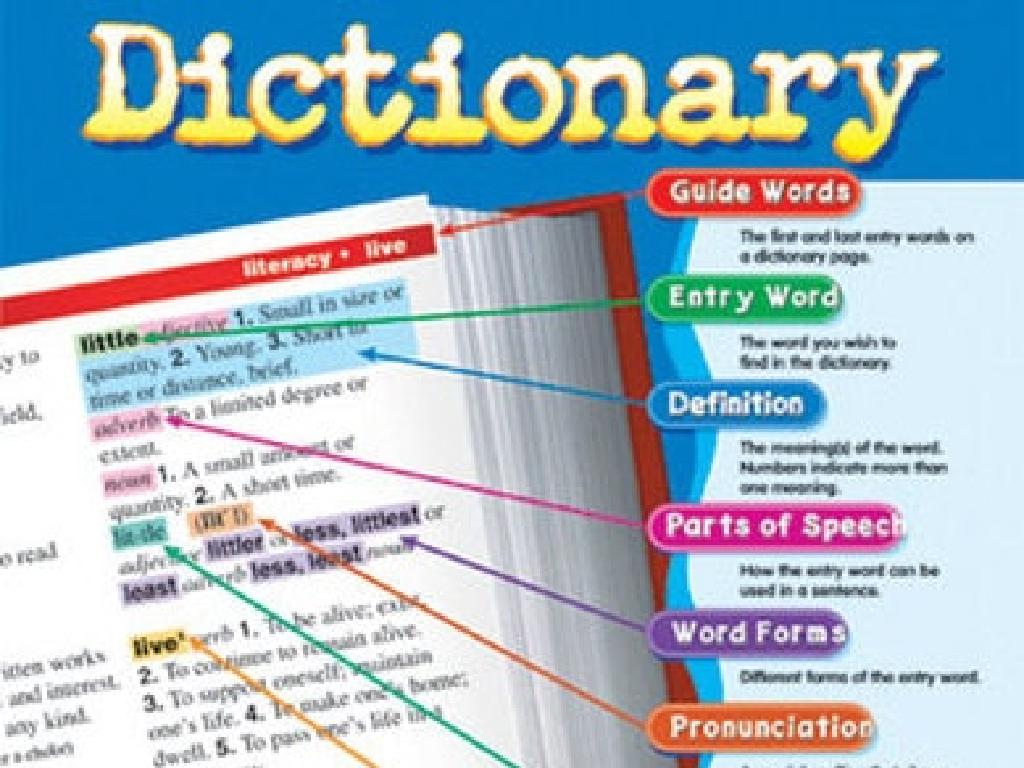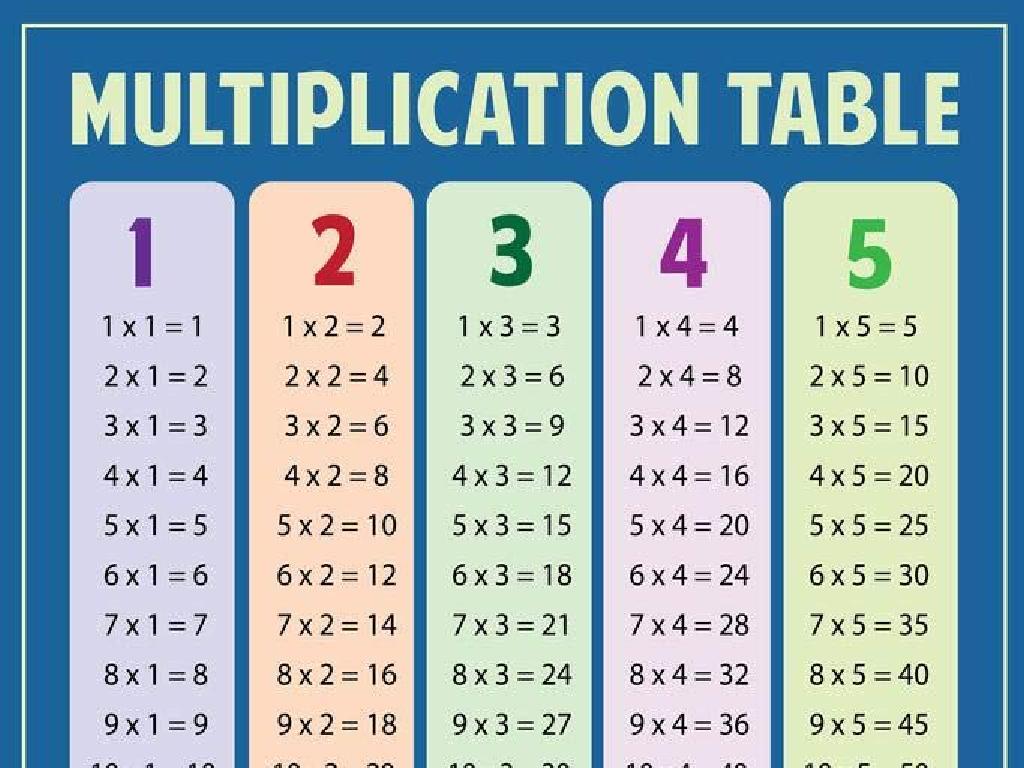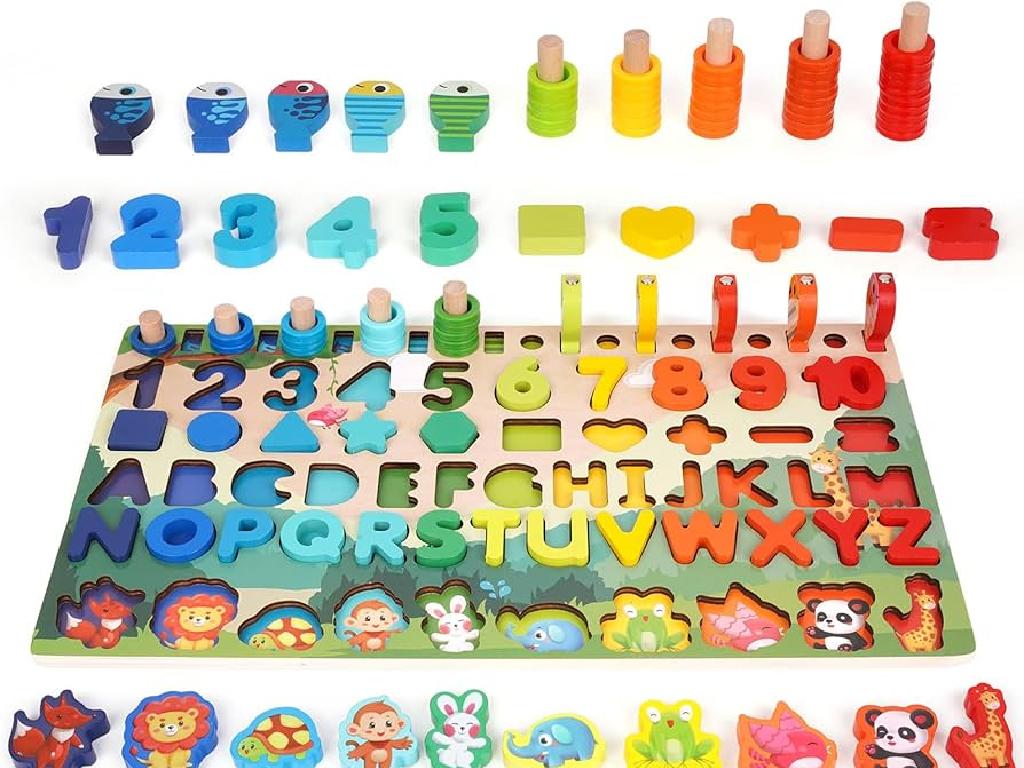Classify Polygons: Up To 6 Sides
Subject: Math
Grade: Second grade
Topic: Two-Dimensional Shapes
Please LOG IN to download the presentation. Access is available to registered users only.
View More Content
Exploring Polygons with Up to 6 Sides
– What is a polygon?
– A shape with straight lines and no curves
– Polygons are 2D shapes
– They are flat shapes, like paper cut-outs
– Counting sides of polygons
– Let’s count sides together: triangle has 3, rectangle has 4
– Polygons up to 6 sides
– We’ll learn about triangles, quadrilaterals, pentagons, and hexagons
|
Begin the class with an engaging question about polygons to spark curiosity. Explain that polygons are two-dimensional shapes with straight sides, like outlines of drawings on paper. Use visual aids to show different polygons and involve the class in counting the sides of each shape. Highlight the names and properties of polygons with up to 6 sides: triangles, quadrilaterals, pentagons, and hexagons. Encourage students to identify these shapes in the classroom or at home to reinforce their learning.
Exploring Polygons
– What is a polygon?
– A shape with straight, fully closed sides
– Polygons have straight sides
– Sides, vertices, and angles
– Each shape has equal sides, corners (vertices), and angles
– Counting sides and vertices
– Practice by counting them on different polygons
|
Introduce the concept of polygons to the students by defining a polygon as a two-dimensional shape with straight, fully closed sides. Emphasize that lines must be straight and connected to form a polygon. Explain that polygons are named based on the number of sides and vertices they have, which are also equal to the number of angles. Use examples of polygons with up to 6 sides, such as triangles, quadrilaterals, pentagons, and hexagons, and have students practice counting the sides and vertices on each. This will help them to classify different types of polygons. Encourage students to draw their own polygons and share with the class.
Exploring Triangles
– A triangle has 3 sides
– A triangle has 3 angles
– Triangles have different shapes
– Some are tall, some are wide, but all have 3 sides and 3 angles.
– Let’s count sides and angles!
– Practice by drawing triangles and counting together.
|
This slide introduces the basic properties of triangles to second-grade students. Start by explaining that a triangle is a shape with three straight sides and three angles. Use visual aids to show different types of triangles, such as equilateral, isosceles, and scalene. Emphasize that no matter how they look, all triangles have three sides and three angles. Engage the students by having them draw their own triangles and count the sides and angles as a class activity. This will help them recognize triangles in various orientations and understand that the defining feature is the number of sides and angles, not the overall shape.
Exploring Quadrilaterals
– Quadrilaterals: 4 sides, 4 angles
– A shape with four straight sides and four angles.
– Find classroom quadrilateral objects
– Look around! Desks, books, and the door may be quadrilaterals.
– Examples: squares and rectangles
– Squares have equal sides, rectangles have equal opposite sides.
|
This slide introduces students to the concept of quadrilaterals as part of the larger topic of polygons. Emphasize that quadrilaterals are four-sided shapes and can be found in everyday objects. Encourage students to look around the classroom to find items that match this description, such as a book, a desk, or a computer screen. Discuss how squares and rectangles are both quadrilaterals, but with different properties: all sides of a square are equal, while a rectangle has equal opposite sides. This activity will help students recognize and classify shapes in their environment, reinforcing their understanding of geometry in a practical and interactive way.
Exploring Pentagons
– A pentagon has 5 sides
– A pentagon has 5 angles
– Drawing a pentagon together
– We’ll use the board to draw step by step
– Pentagons: Regular vs Irregular
– Regular pentagons have equal sides and angles, irregular ones do not
|
This slide introduces the concept of pentagons to second-grade students. Start by explaining that a pentagon is a shape with five sides and five angles. Demonstrate drawing a pentagon on the board, inviting students to follow along with their own drawings. Emphasize the difference between regular pentagons, with all sides and angles equal, and irregular pentagons, where sides and angles can vary. Encourage students to identify and draw both types of pentagons. Provide examples of each and consider bringing in real-life objects that have pentagonal shapes to help students connect the concept to the world around them.
Exploring Hexagons
– A hexagon has 6 sides
– A hexagon has 6 angles
– Show a hexagon with fingers
– Can you make a hexagon shape with your hands?
– Real-life hexagon examples
– Honeycombs and nuts are shaped like hexagons
|
This slide introduces students to hexagons, a type of polygon with six sides and six angles. Start by explaining what a hexagon is and then engage the students by asking them to show the shape with their fingers, making the learning interactive. Afterward, provide real-life examples of hexagons, such as honeycombs and nuts, to help students recognize these shapes in their environment. Encourage the students to find and bring in their own examples of hexagons for the next class to foster observational skills and reinforce the concept.
Identifying Polygons
– Practice identifying polygons
– Count the sides of each shape
– Look at the shape and count each side aloud
– Sides and angles name the polygon
– Triangles have 3, rectangles have 4, and so on
– Let’s learn and have fun together
|
This slide is designed to engage second-grade students in a hands-on activity to identify different polygons by counting their sides. Start by showing them various shapes one at a time and ask them to count the sides out loud. Reinforce the concept that the number of sides and angles is what helps us to identify the name of the polygon, such as a triangle, rectangle, pentagon, etc. Make the activity interactive and enjoyable, encouraging the students to participate actively. As they count, they will become more familiar with the shapes and their properties. This exercise will help solidify their understanding of basic polygons and prepare them for more advanced geometric concepts.
Class Activity: Polygon Shape Hunt
– Let’s go on a classroom shape hunt!
– Match objects to polygon shapes
– Find real-life examples of triangles, squares, etc.
– Draw the polygons on your worksheet
– Use your worksheet to sketch the shapes
– Share your findings with the class
|
This interactive activity is designed to help students recognize and classify polygons by relating them to objects in their environment. Encourage the students to look for items in the classroom that resemble polygons such as triangles, rectangles, squares, pentagons, and hexagons. Provide each student with a Shape Hunt worksheet where they can draw the shapes they find. After the hunt, ask students to share their findings with the class to reinforce their understanding of polygons and their characteristics. Possible activities: 1) Find the most polygons, 2) Find a polygon for each category, 3) Find an object that can represent more than one polygon, 4) Create a polygon collage with the shapes found.
Polygons Review and Looking Ahead
– Congratulations on learning polygons!
– What’s a seven-sided polygon called?
– A polygon with 7 sides is a heptagon
– Polygons are everywhere
– Keep exploring shapes around you!
|
This slide wraps up the lesson on polygons with up to 6 sides. It’s a moment to celebrate the students’ learning and to pique their curiosity about more complex shapes. After praising their efforts, introduce the term ‘heptagon’ as a teaser for future lessons, ensuring to briefly explain that a heptagon is a shape with seven sides. Encourage students to observe their surroundings and identify polygons in real life, reinforcing the idea that the shapes they learn in class are not just abstract concepts but are part of their everyday environment. This will help them appreciate geometry as a practical subject. For the next class, consider bringing in examples of heptagons or having students find and bring their own examples to share.
Polygon Homework Adventure
– Complete the Polygon Worksheet
– Find and draw 3 examples of each polygon
– Look around your house or outside for real-life polygons
– Use creativity in your drawings
– Drawings can include objects like a hexagonal clock or a square window
– Share your artwork in class
|
This homework assignment is designed to reinforce the day’s lesson on polygons by engaging students in a practical activity. Encourage them to look for polygons in their environment, which will help them recognize these shapes in the real world. Remind them that polygons are 2D shapes with straight sides, and we’re focusing on those with up to 6 sides. Provide a worksheet with clear instructions and examples of polygons to guide their home activity. In the next class, create a gallery of their drawings to celebrate their work and further discuss the properties of the polygons they found.






